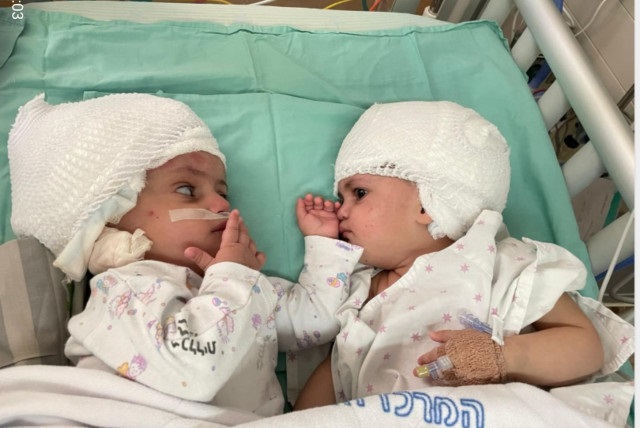Craniopagus twins are conjoined twins that are fused at the cranium. With advances in neuroimaging, neuroanesthesia, neurosurgical techniques, and now 3D printing & virtual reality technologies, successful separation operations have become more common.
Recently, in Israel, a team of doctors have performed an operation to separate one-year-old conjoined twins. What is described as a first of its kind in Israel is not a premiere for the world. As a matter of fact, two years ago, we covered the separation of twins Safa and Marwa Ullah at UK-based GOSH. The British operation is very similar to the Israeli one in that both required the use of 3D printing technologies, and virtual reality.
In Israel, 3D modeling, virtual reality and special monitoring devices were pivotal for the success of this operation. 3D4OP 3D models based on images from MRI, CT and angiography scans enable to simulate the complexity of the connection of the blood vessels, meninges, skull bones and skin of the twins. Those models were thereafter 3D printed on a Stratasys printer for further analysis of the procedure.
Prior to the theatre room, the medical staff which comprises a dozen members, utilized a VR model called Surgical Theater to mimick all the steps of the procedure in a very accurate way. According to the Jerusalem Post, dozens of simulations of all the stages of the operation were performed in each of the models before the day of the surgery.
The whole preparation took several months as the medical team introduced skin and tissue extenders several needed to create excess skin that would be used to close the scalp of the girls after the separation. Several tests and a continuous medical monitoring including a monitoring of their cardiac and respiratory function have been performed to make sure everything goes well for the twins.
“This is a very rare operation, performed so far in the world only about 20 times and for the first time in Israel in one-year-old babies, one of the youngest in which this procedure was performed,” said Dr. Mickey Gideon, director of pediatric neurosurgery at Soroka. “The next few days will be critical in the process of the twins’ recovery.”
After the 12-hour procedure, the blood vessels and the bones were successfully separated. In two separate operating rooms, a dedicated medical staff performed the skull’s reconstruction of each of the girls and closing the skin.
“I am very proud of our teams, of all the specialists that engaged in this challenging and complex event,” said hospital director Dr. Shlomo Kodesh. “I wish complete healing for the twins and their family.”
Remember, you can post free of charge job opportunities in the AM Industry on 3D ADEPT Media or look for a job via our job board. Make sure to follow us on our social networks and subscribe to our weekly newsletter : Facebook, Twitter, LinkedIn & Instagram ! If you want to be featured in the next issue of our digital magazine or if you hear a story that needs to be heard, make sure to send it to contact@3dadept.com






